The Intel Kaby Lake-X i7 7740X and i5 7640X Review: The New Single-Threaded Champion, OC to 5GHz
by Ian Cutress on July 24, 2017 8:30 AM EST- Posted in
- CPUs
- Intel
- Kaby Lake
- X299
- Basin Falls
- Kaby Lake-X
- i7-7740X
- i5-7640X
Shadow of Mordor
The next title in our testing is a battle of system performance with the open world action-adventure title, Middle Earth: Shadow of Mordor (SoM for short). Produced by Monolith and using the LithTech Jupiter EX engine and numerous detail add-ons, SoM goes for detail and complexity. The main story itself was written by the same writer as Red Dead Redemption, and it received Zero Punctuation’s Game of The Year in 2014.
A 2014 game is fairly old to be testing now, however SoM has a stable code and player base, and can still stress a PC down to the ones and zeroes. At the time, SoM was unique, offering a dynamic screen resolution setting allowing users to render at high resolutions that are then scaled down to the monitor. This form of natural oversampling was designed to let the user experience a truer vision of what the developers wanted, assuming you had the graphics hardware to power it but had a sub-4K monitor.
The title has an in-game benchmark, for which we run with an automated script implement the graphics settings, select the benchmark, and parse the frame-time output which is dumped on the drive. The graphics settings include standard options such as Graphical Quality, Lighting, Mesh, Motion Blur, Shadow Quality, Textures, Vegetation Range, Depth of Field, Transparency and Tessellation. There are standard presets as well.
We run the benchmark at 1080p and a native 4K, using our 4K monitors, at the Ultra preset. Results are averaged across four runs and we report the average frame rate, 99th percentile frame rate, and time under analysis.
For all our results, we show the average frame rate at 1080p first. Mouse over the other graphs underneath to see 99th percentile frame rates and 'Time Under' graphs, as well as results for other resolutions. All of our benchmark results can also be found in our benchmark engine, Bench.
MSI GTX 1080 Gaming 8G Performance
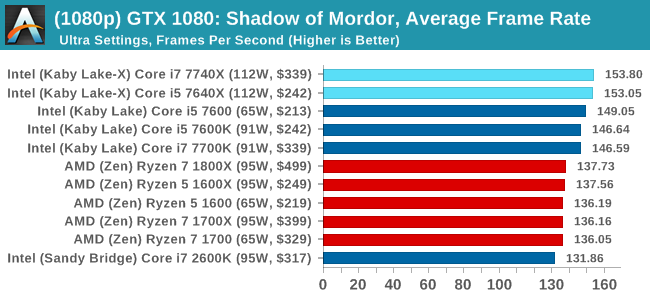
1080p

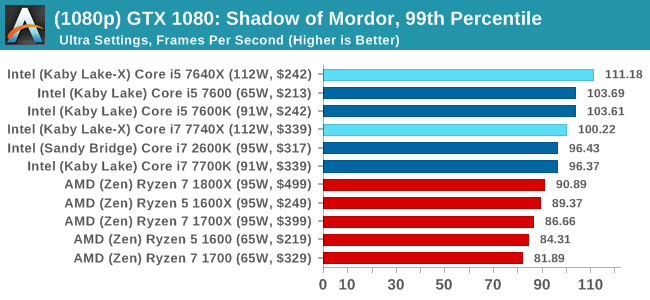
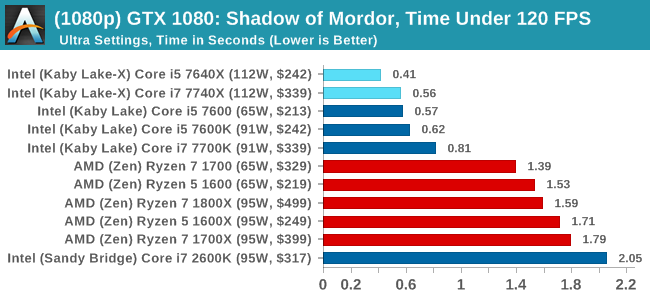
4K
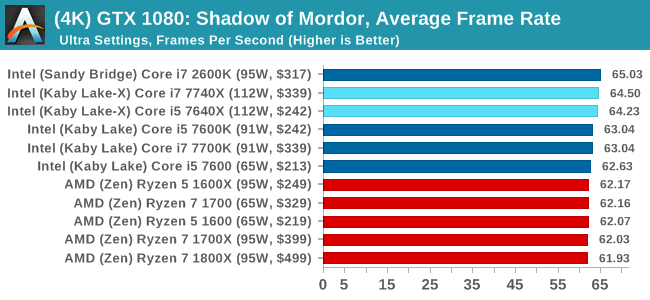
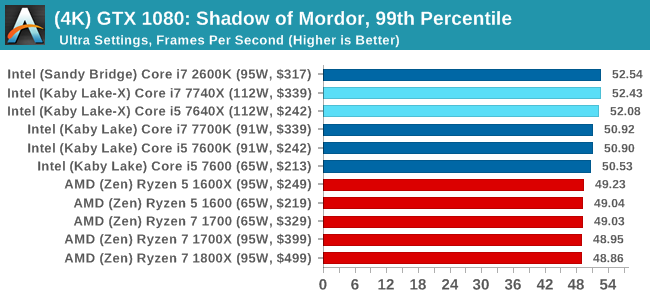
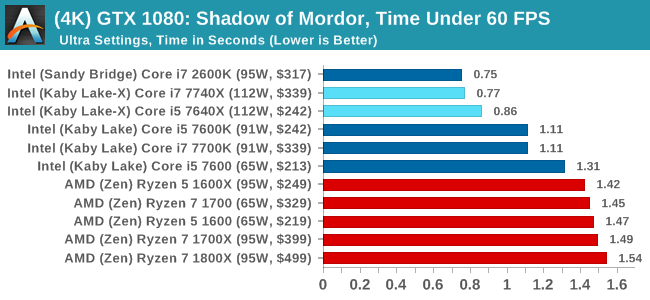
ASUS GTX 1060 Strix 6GB Performance
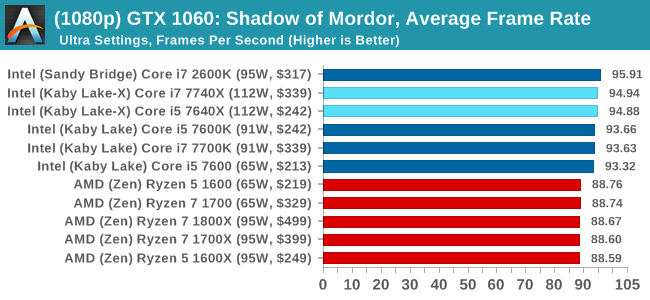
1080p

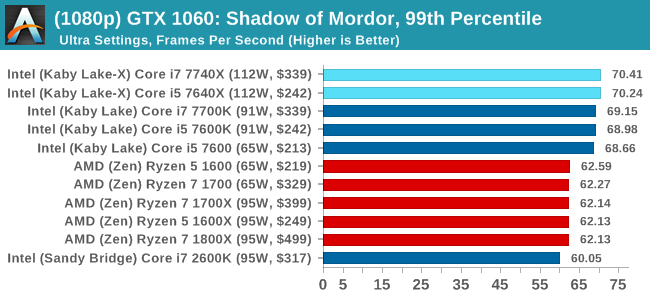
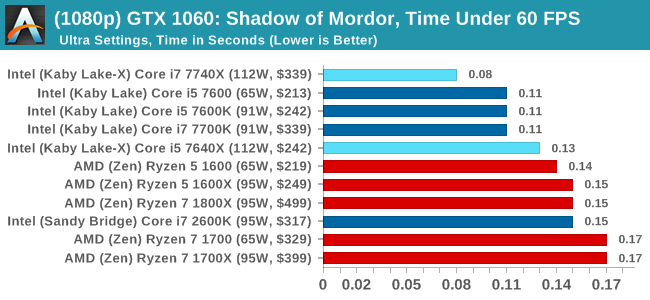
4K
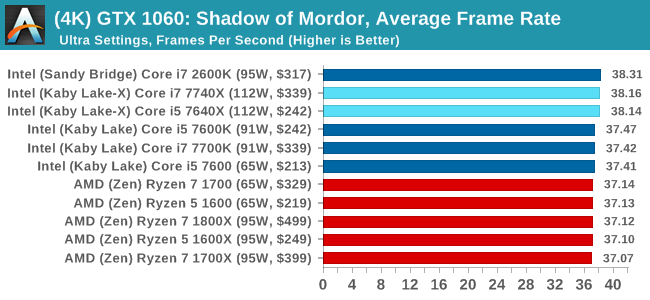
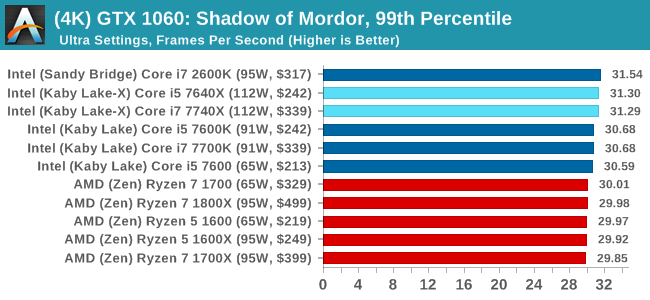
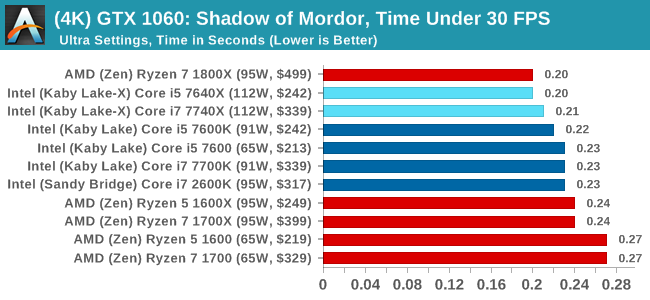
Sapphire R9 Fury 4GB Performance

1080p


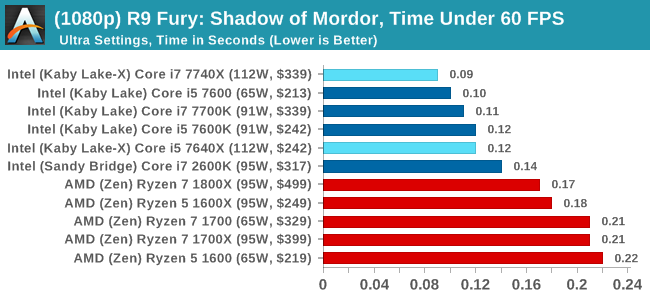
4K
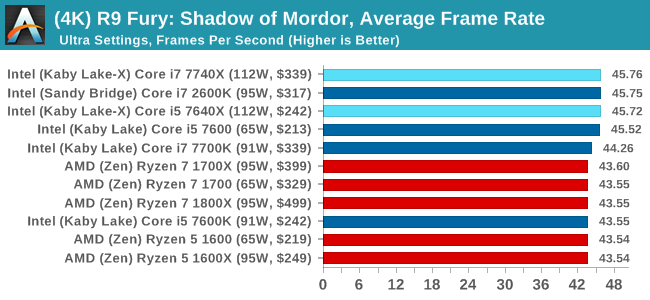
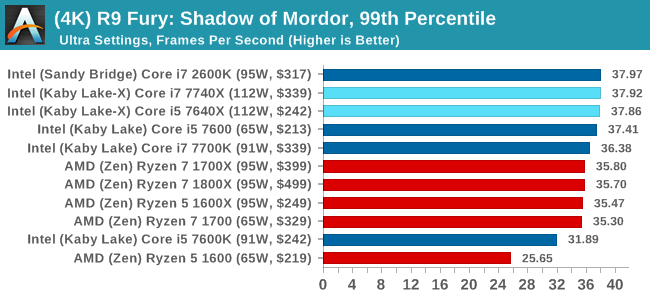

Sapphire RX 480 8GB Performance
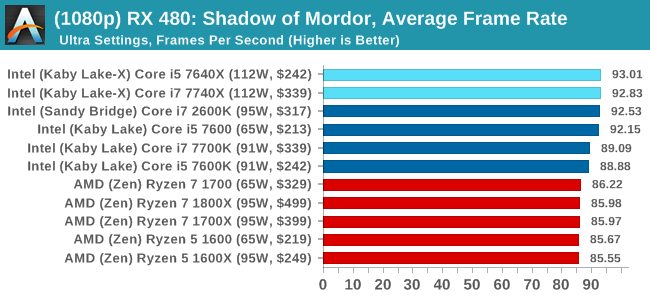
1080p

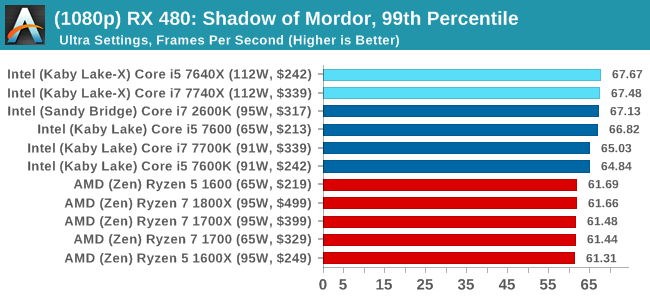
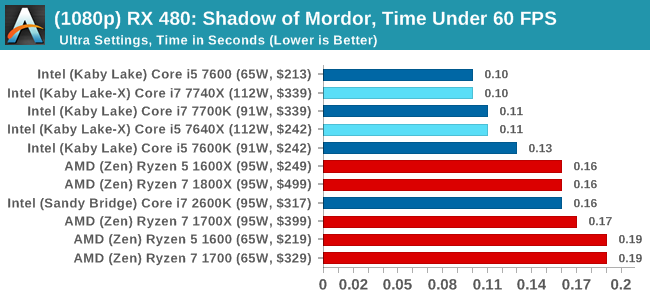
4K
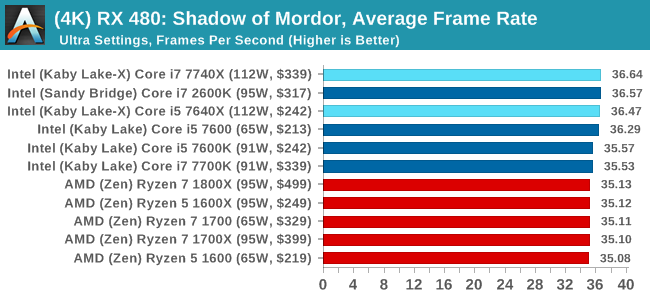
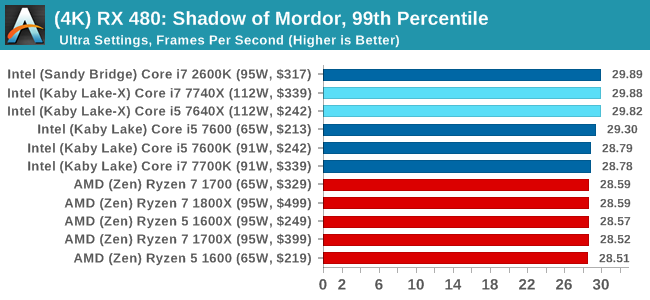
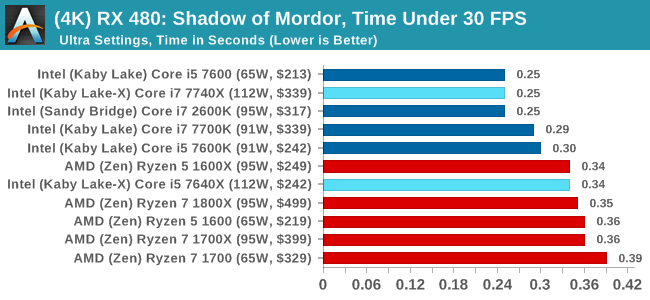
Shadow of Mordor Conclusions
Again, a win across the board for Intel, with the Core i7 taking the top spot in pretty much every scenario. AMD isn't that far behind for the most part.












176 Comments
View All Comments
mapesdhs - Monday, July 24, 2017 - link
Let the memes collide, focus the memetic radiation, aim it at IBM and get them to jump into the x86 battle. :Ddgz - Monday, July 24, 2017 - link
Man, I could really use an edit button. my brain has shit itselfmapesdhs - Monday, July 24, 2017 - link
Have you ever posted a correction because of a typo, then realised there was a typo in the correction? At that point my head explodes. :DGlock24 - Monday, July 24, 2017 - link
"The second is for professionals that know that their code cannot take advantage of hyperthreading and are happy with the performance. Perhaps in light of a hyperthreading bug (which is severely limited to minor niche edge cases), Intel felt a non-HT version was required."This does not make any sense. All motherboards I've used since Hyper Threading exists (yes, all the way back to the P4) lets you disable HT. There is really no reason for the X299 i5 to exist.
Ian Cutress - Monday, July 24, 2017 - link
Even if the i5 was $90-$100 cheaper? Why offer i5s at all?yeeeeman - Monday, July 24, 2017 - link
First interesting point to extract from this review is that i7 2600K is still good enough for most gaming tasks. Another point that we can extract is that games are not optimized for more than 4 core so all AMD offerings are yet to show what they are capable of, since all of them have more than 4 cores / 8 threads.I think single threading argument absolute performance argument is plain air, because the differences in single thread performance between all top CPUs that you can currently buy is slim, very slim. Kaby Lake CPUs are best in this just because they are sold with high clocks out of the box, but this doesn't mean that if AMD tweaks its CPUs and pushes them to 5Ghz it won't get back the crown. Also, in a very short time there will be another uArch and another CPU that will have again better single threaded performance so it is a race without end and without reason.
What is more relevant is the multi-core race, which sooner or later will end up being used more and more by games and software in general. And when games will move to over 4 core usage then all these 4 cores / 8 threads overpriced "monsters" will become useless. That is why I am saying that AMD has some real gems on their hands with the Ryzen family. I bet you that the R7 1700 will be a much better/competent CPU in 3 years time compared to 7700K or whatever you are reviewing here. Dirt cheap, push it to 4Ghz and forget about it.
Icehawk - Monday, July 24, 2017 - link
They have been saying for years that we will use more cores. Here we are almost 20 years down the road and there are few non professional apps and almost no games that use more than 4 cores and the vast majority use just two. Yes, more cores help with running multiple apps & instances but if we are just looking at the performance of the focused app less cores and more MHz is still the winner. From all I have read the two issues are that not everything is parallelizable and that coding for more cores/threads is more difficult and neither of those are going away.mapesdhs - Monday, July 24, 2017 - link
Thing is, until now there hasn't been a mainstream-affordable solution. It's true that parallel coding requires greater skill, but that being the case then the edu system should be teaching those skills. Instead the time is wasted on gender studies nonsense. Intel could have kick started this whole thing years ago by releasing the 3930K for what it actually was, an 8-core CPU (it has 2 cores disabled), but they didn't have to because back then AMD couldn't even compete with mid-range SB 2500K (hence why they never bothered with a 6-core for mainstream chipsets). One could argue the lack of market sw evolvement to exploit more cores is Intel's fault, they could have helped promote it a long time ago.cocochanel - Tuesday, July 25, 2017 - link
+1!!!twtech - Monday, July 24, 2017 - link
What can these chips do with a nice watercooling setup, and a goal of 24x7 stability? Maybe 4.7? 4.8?These seem like pretty moderate OCs overall, but I guess we were a bit spoiled by Sandy Bridge, etc., where a 1GHz overclock wasn't out of the question.